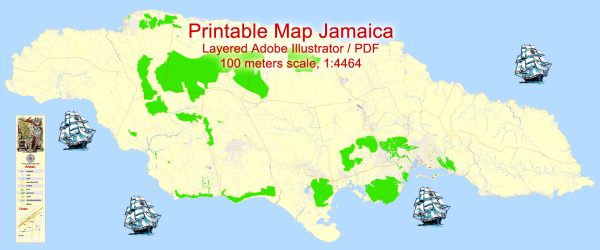Jamaica’s history of urban development is a fascinating journey that reflects the island’s rich cultural heritage, economic shifts, and social changes. The urban development of Jamaica can be traced back to the indigenous Taino people who inhabited the island before the arrival of Christopher Columbus in 1494. However, the most significant changes in urban development occurred during the colonial period and post-independence era.
- Colonial Period (1494-1962):
- Spanish Influence: The Spanish established the first European settlement, Sevilla la Nueva (New Seville), in 1509, but later moved it to Spanish Town in 1534. Spanish Town served as the capital of Jamaica until 1872. The layout of these early settlements was influenced by Spanish urban planning principles.
- British Influence: After the British seized control of Jamaica in 1655, they established Kingston as the new capital in 1692, following the devastating Port Royal earthquake. Kingston’s development was influenced by British colonial planning, and it became a major center for trade and commerce.
- 19th Century:
- Economic Changes: The 19th century saw the rise of sugar plantations, and urban centers like Kingston expanded due to increased trade and commerce. The development of infrastructure, including roads and railways, facilitated economic growth.
- Urban Planning: The layout of cities began to follow a grid pattern, reflecting a more organized approach to urban planning. This period also witnessed the construction of notable buildings, including churches, government offices, and markets.
- 20th Century:
- Infrastructure Development: The 20th century brought significant improvements in infrastructure, with the construction of roads, bridges, and the development of public transportation. These changes contributed to the growth and modernization of urban areas.
- Social Changes: The mid-20th century saw increased migration from rural to urban areas, leading to population growth in cities. This influx strained existing infrastructure, leading to challenges in housing, sanitation, and public services.
- Post-Independence (1962-Present):
- Modernization: After gaining independence from Britain in 1962, Jamaica experienced further urbanization and modernization. The government implemented initiatives to improve urban infrastructure, housing, and services.
- Tourism Development: The tourism industry became a significant driver of urban development, with the development of resorts and infrastructure to accommodate the growing number of tourists visiting the island.
- Challenges: Urban areas face challenges such as informal settlements, traffic congestion, and environmental concerns. Efforts have been made to address these issues through urban planning and development projects.
Overall, Jamaica’s history of urban development reflects a blend of indigenous, Spanish, and British influences, shaping the island’s urban landscape into a dynamic mix of historical and modern elements. The ongoing challenges and efforts to address them underscore the importance of sustainable urban planning and development in Jamaica.


 Author: Kirill Shrayber, Ph.D.
Author: Kirill Shrayber, Ph.D.